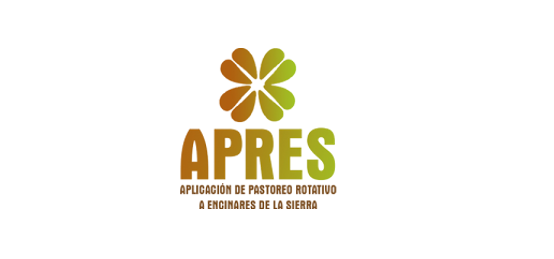
APRES Operational Group: Application of grazing to holm oak forests in the Sierra Norte de Madrid
- Type Operational group
- Status Filled
- Execution 2018 -2021
- Assigned Budget 158.820,00 €
- Scope Autonómico
- Autonomous community Madrid, Comunidad de
- Main source of financing CAP 2014-2020
- Project website GO APRES
The current pattern of livestock farming shows signs of exhaustion due to the deterioration of key social and ecological processes. At the social level, changes in the costs of livestock inputs and the decline in average income per animal have led to a dramatic reduction in the number of farms and an increase in the average age of their owners.
At the ecological level, the risk of desertification arises as a consequence of changes in land use (e.g., urbanization, abandonment of targeted livestock grazing, etc.). Various land management strategies and practices must be validated to mitigate this trend.
The current pattern of livestock farming shows signs of exhaustion due to the deterioration of key social and ecological processes. At the social level, changes in the costs of livestock inputs and the decline in average income per animal have led to a dramatic reduction in the number of farms and an increase in the average age of their owners. At the ecological level, the risk of desertification arises as a consequence of changes in land use (urbanization, abandonment of targeted livestock grazing, etc.). Different land management strategies and practices need to be validated to mitigate this trend.
- Division of the intervention area into plots and design of strips.
- Soil and flora monitoring.
- Carrying out the thinning operations of the holm oak forest.
- Directed grazing of animals following different parameters.
- Monitoring, re-evaluation of soils and flora.
- Interpretation of the results obtained.
- Communication and outreach (field visits, informational meetings, dissemination of materials, etc.).
Despite its history of livestock farming, cattle grazing has become a marginal activity in the Sierra Madrileña. Profitable grazing patterns are needed to manage large areas of the territory. This project aims to develop successful grazing patterns and apply them to holm oak forests in the Sierra and other similar environments in the Community of Madrid. The grazing patterns will be validated based on their socioeconomic and environmental outcomes and the requirements and possibilities of livestock farmers.
The practical results of the proposal are derived from experimentation in grazing, specifically from the selection, validation, measurement, and data analysis of the indicators. These results will be made available to industry professionals, who will be able to learn about the status of the holm oak forests and grasslands they manage, as well as become familiar with data collection.
The general public will also receive information on beneficial grazing patterns that have a positive environmental and productive impact.
At the environmental level, the indicator data will emphasize the managed area and the capacity to create fertile soil, sequester carbon, and promote biodiversity.
At the production level, the data provided by the indicators will focus on the amounts and forms of income derived from the different activities within the management of a holm oak forest that are compatible with livestock grazing: Production ratios per hectare and those related to the marketing of biomass, poultry, and mushrooms.
- Coordinator/entity name: Alejandro Benito Barba
- Postal address:
- Coordinator/entity email: Not available
- Telephone: Not available
- Alejandro Benito Barba
- Asociación ENRAMA (contacto@enrama.org)
- Ayuntamiento de Cabanillas de la Sierra (aedl@cabanillasdelasierra.org)
- Asociación de criadores de ganado de razaBerrenda de la Comunidad de Madrid (ABEMA) (oscarherrero62@hotmail.com)
- IMIDRA(imidra@imidra.org)
- Asociación GALSINMA(juan.montoya@galsinma.org)
- Mario de La Madrid Heitzmann (mariodelamadrid@gmail.com)
- Isabel Catalán Bayón(emprendesierranorte@gmail.com)
- Alejandro Benito Barba



